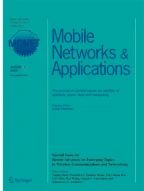Abstract
Hospitals are convenient settings for the deployment of context-aware applications. The information needs of hospital workers are highly dependent on contextual variables, such as location, role and activity. While some of these parameters can be easily determined, others, such as activity are much more complex to estimate. This paper describes an approach to estimate the activity being performed by hospital workers. The approach is based on information gathered from a workplace study conducted in a hospital, in which 196 h of detailed observation of hospital workers was recorded. Contextual information, such as the location of hospital workers, artifacts being used, the people with whom they collaborate and the time of the day, is used to train a back propagation neural network to estimate hospital workers activities. The activities estimated include clinical case assessment, patient care, preparation, information management, coordination and classes and certification. The results indicate that the user activity can be correctly estimated 75% of the time (on average) which is good enough for several applications. We discuss how these results can be used in the design of activity-aware applications, arguing that recent advances in pervasive and networking technologies hold great promises for the deployment of such applications.
Similar content being viewed by others
References
Abowd GD, Mynatt ED (2000) Charting past, present, and future research in ubiquitous computing. ACM Trans Comput-Hum Interact (TOCHI) 7(1):29–58
Abowd G, Mynatt E (2002) The human experience. IEEE Pervasive Computing 1(1):48–57
Bardram JE (2004) Applications of context-aware computing in hospital work: examples and design principles. In: ACM symposium on applied computing. ACM Press, Nicosia, Cyprus, pp 1574–1579
Bardram JE, Bossen C (2005) Mobility work: the spatial dimension of collaboration at a hospital. In: ECSCW. Kluwer Academic Publishers, Paris, France, pp 176–185
Bian X, Abowd, GD, Rehg JM (2004) Using sound source localization to monitor and infer activities in the Home. Georgia Institute of Technology, Atlanta, GA, Technical Report; GIT-GVU-04-20
Bossen C (2002) The parameters of common information spaces: the heterogeneity of cooperative work at a hospital ward. In: CSCW. Kluwer, New Orleans, Louisiana, pp 176–185
Camacho J, Favela J, Gonzalez VM (2006) Supporting the management of multiple activities in mobile collaborative working environments. In: CRIWG. Springer, Valladolid, Spain, pp 381–388
Chen M, Haehnel D, Hightower J, Sohn T, LaMarca A, Smith I, Chmelev D, Hughes J, Potter F (2006) Practical metropolitan-scale positioning for GSM Phones. In: 8th international conference on ubiquitous computing. Springer, Orange County, CA, USA, pp 225–242
Chin T (2005) Untapped power: a physician’s handheld. AMNews, Danville, KY
Christensen HB (2002) Using logic programming to detect activities in pervasive healthcare. In: International conference on logic programming. Copenhagen, Denmark, pp 21–436
Duda RO, Hart PE, Stork DG (2000) Pattern classification. Wiley, NY
Favela J, Tentori M, Markarian A, Castro LA, Amaya I (2006) Integrating heterogeneous devices in support of local mobility. In: 12th Americas Conference on Information Systems. Association for Information Systems, Acapulco, Mexico
Fishkin KP, Jiang B, Philipose M, Roy S (2004) I sense a disturbance in the force: unobtrusive detection of interactions with RFID-tagged objects. Ubicomp, Innsbruck, Austria
Fogarty J, Hudson SE, Atkeson CG, Avrahami D, Forlizzi J, Kiesler S, Lee JC, Yang J (2005) Predicting human interruptibility with sensors interruptibility with sensors. ACM Trans Comput-Hum Interact 12(1):119–146
González V, Mark G (2004) Constant, constant, multi-tasking craziness: managing multiple working spheres. In: CHI. ACM Press, Vienna, Austria, pp 113–120
Greenberg S (2001) Context as a dynamic construct. Hum-Comput Interact 16(2–4):257–268
Hightower J, Borriello G (2001) Location systems for ubiquitous computing. IEEE Comput:57–66
Intille S, Larson K, Kukla C (2000) House_n: The MIT home of the future project. Department of Architecture, Massachusetts Institute of Technology, Cambridge, MA
Krumm J, Hinckley K (2004) The NearMe wireless proximity server. Ubicomp, Innsbruck, Austria
Krumm J, Horvitz E (2004) LOCADIO: inferring motion and location from Wi-Fi signal strengths. In: First annual international conference on mobile and ubiquitous systems: networking and services. IEEE Press, Boston, MA, USA, pp 4–13
Lapinsky J, Weshler S, Mehta M, Varkul D, Hallett T, Stewart T (2001) Handheld computers in critical care. Crit Care 5(4):227–231
Lee SW, Mase K (2002) Activity and location recognition using wearable sensors. IEEE Pervasive Computing 1(3):24–32
Moran EB, Tentori M, González VM, Martinez-Garcia AI, Favela J (2006) Mobility in hospital work: towards a pervasive computing hospital environment. Int J Electron Healthcare 3(1):72–89
Munguia ET, Intille SS, Larson K (2004) Activity recognition in the home using simple and ubiquitous sensors. In: Pervasive. LNCS Springer, Heidelberg, pp 158–175
Munoz M, Rodriguez MD, Favela J, Martinez-Garcia AI, Gonzalez VM (2003) Context-aware mobile communication in hospitals. IEEE Comput 36(9):38–46
Naya F, Noma H, Ohmura R, Kogure K (2005) Bluetooth-based indoor proximity sensing for nursing context awareness. In: IEEE International Symposium on Wearable Computers, Washington DC, USA
O’Connor MC (2006) Testing ultrasound to track, monitor patients. RFID J 1(31):2
Patwari N, Ash JN, Kyperountas S, Hero Lii AO, Moses RL, Correal NS (2005) Locating the nodes: cooperative localization in wireless sensor networks. IEEE Signal Process Mag 22:54–69
Pentland A (2004) Healthwear: medical technology becomes wearable. IEE Comput 37(5):42–49
Philipose M, Fishkin KP, Perkowi M (2004) Inferring activities from interactions with objects. IEEE Pervasive Computing 3(4):50–57
Reddy M, Dourish P (2002) A finger on the pulse: temporal rhythms and information seeking in medical work. In: Computer supported cooperative work. ACM, New Orleans, Louisiana, pp 344–353
Stanford V (2003) Beam me up, Doctor McCoy. IEEE Pervasive Computing 2(3):13–18
Strauss A, Corbin J (1998) Basics of qualitative research: techniques and procedures for developing grounded theory, ed. Sage, Thousand Oaks, CA
Weiser M (1998) The future of ubiquitous computing on campus. Commun ACM 41(1):41–42
Author information
Authors and Affiliations
Corresponding author
Rights and permissions
About this article
Cite this article
Favela, J., Tentori, M., Castro, L.A. et al. Activity Recognition for Context-aware Hospital Applications: Issues and Opportunities for the Deployment of Pervasive Networks. Mobile Netw Appl 12, 155–171 (2007). https://doi.org/10.1007/s11036-007-0013-5
Published:
Issue Date:
DOI: https://doi.org/10.1007/s11036-007-0013-5
